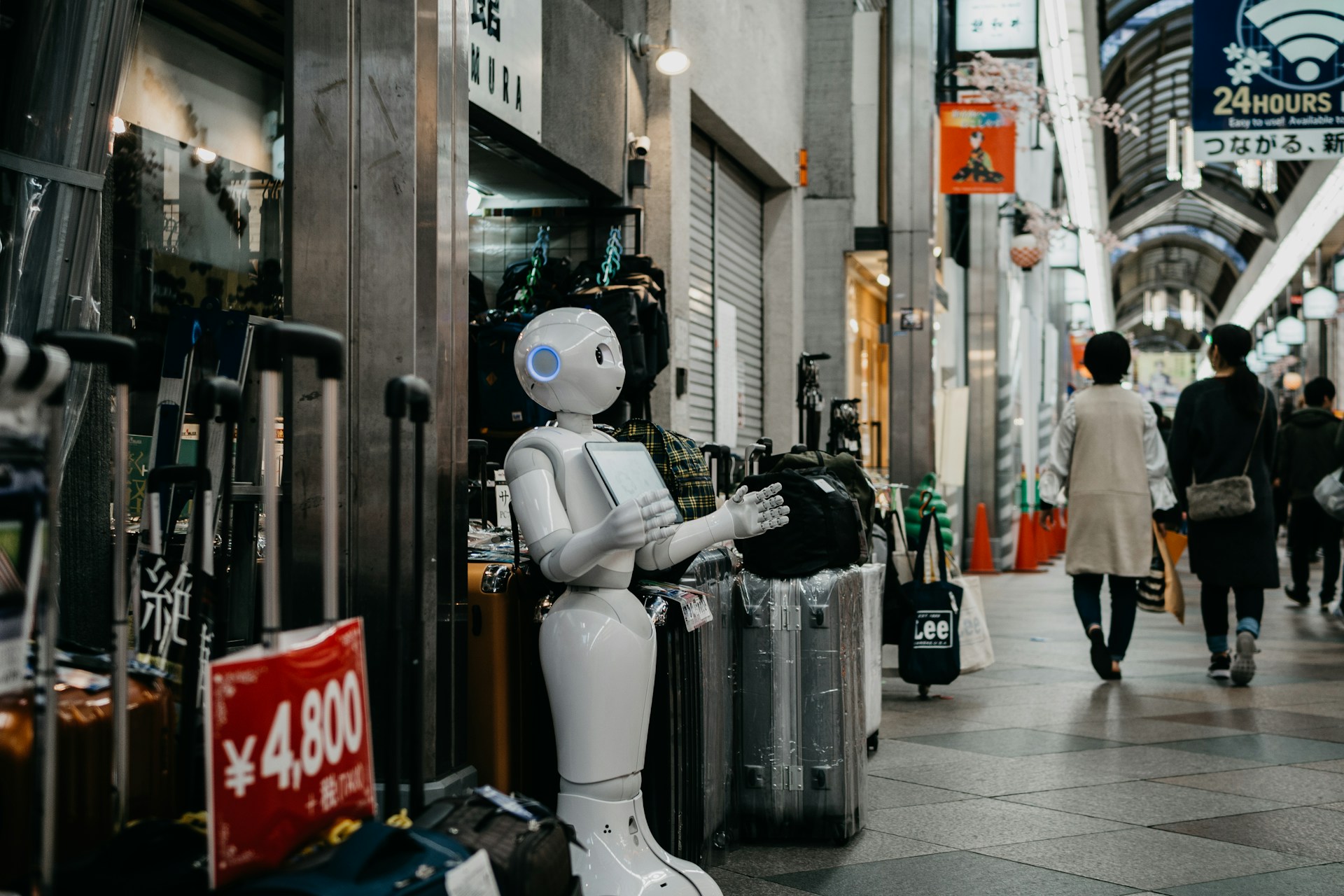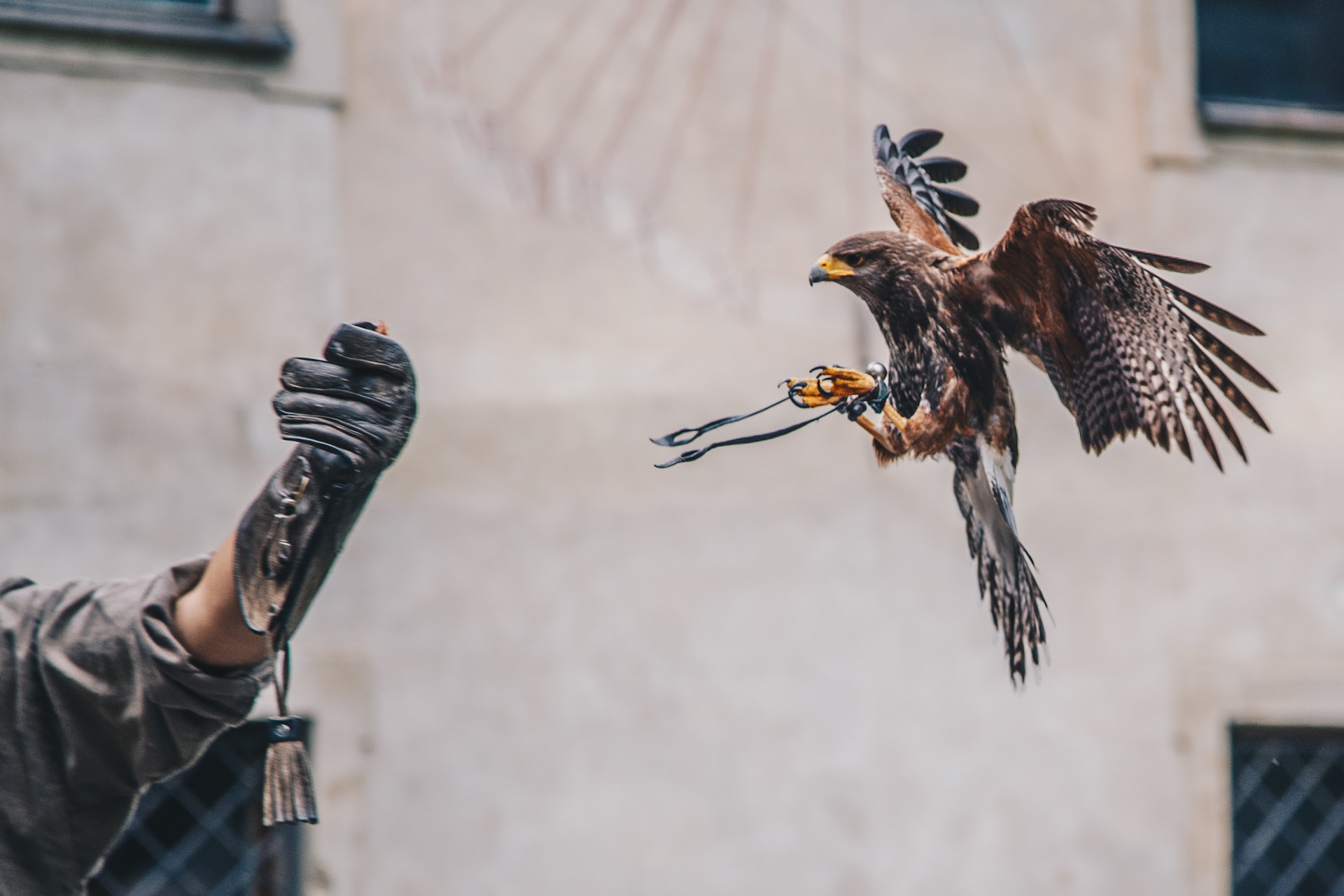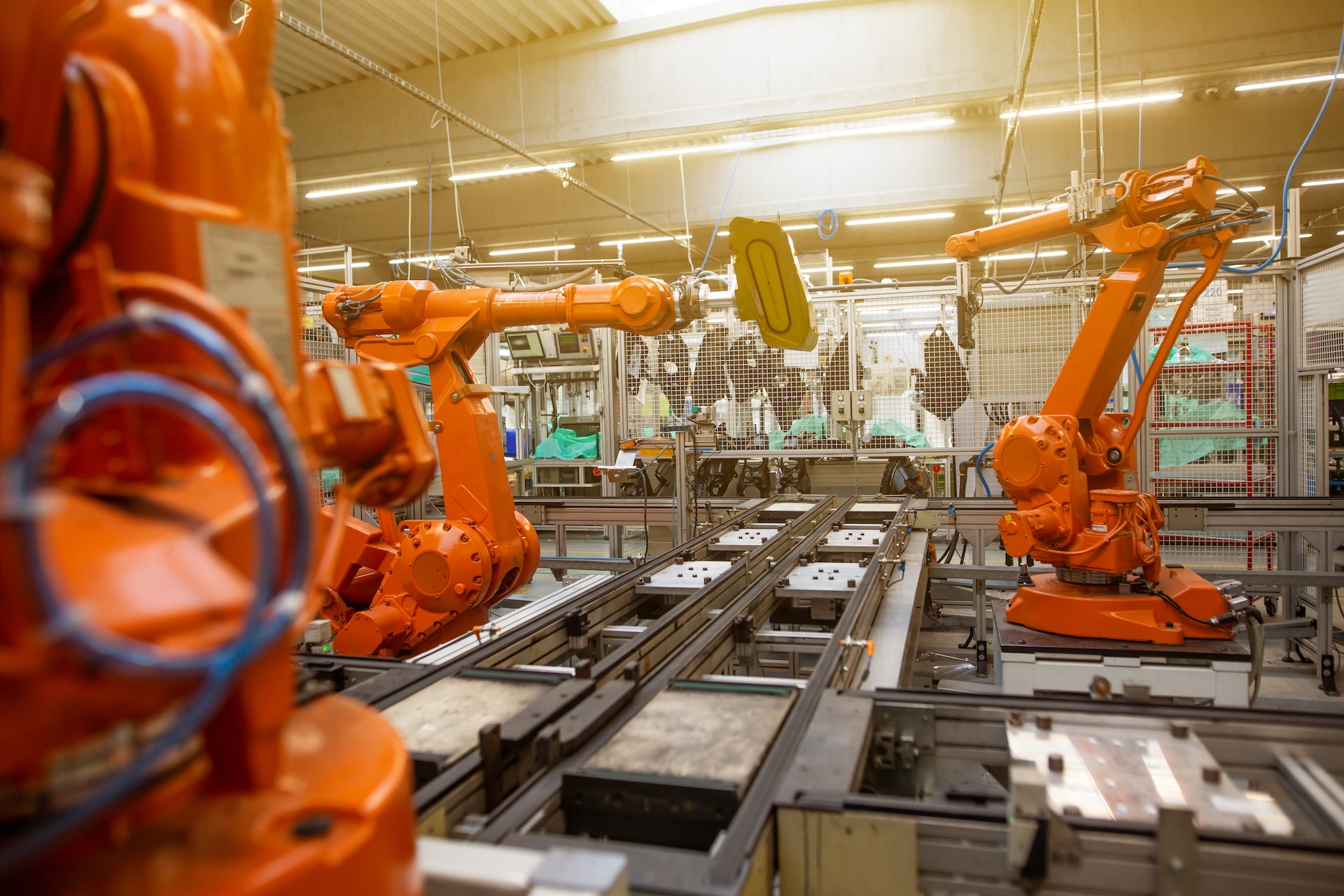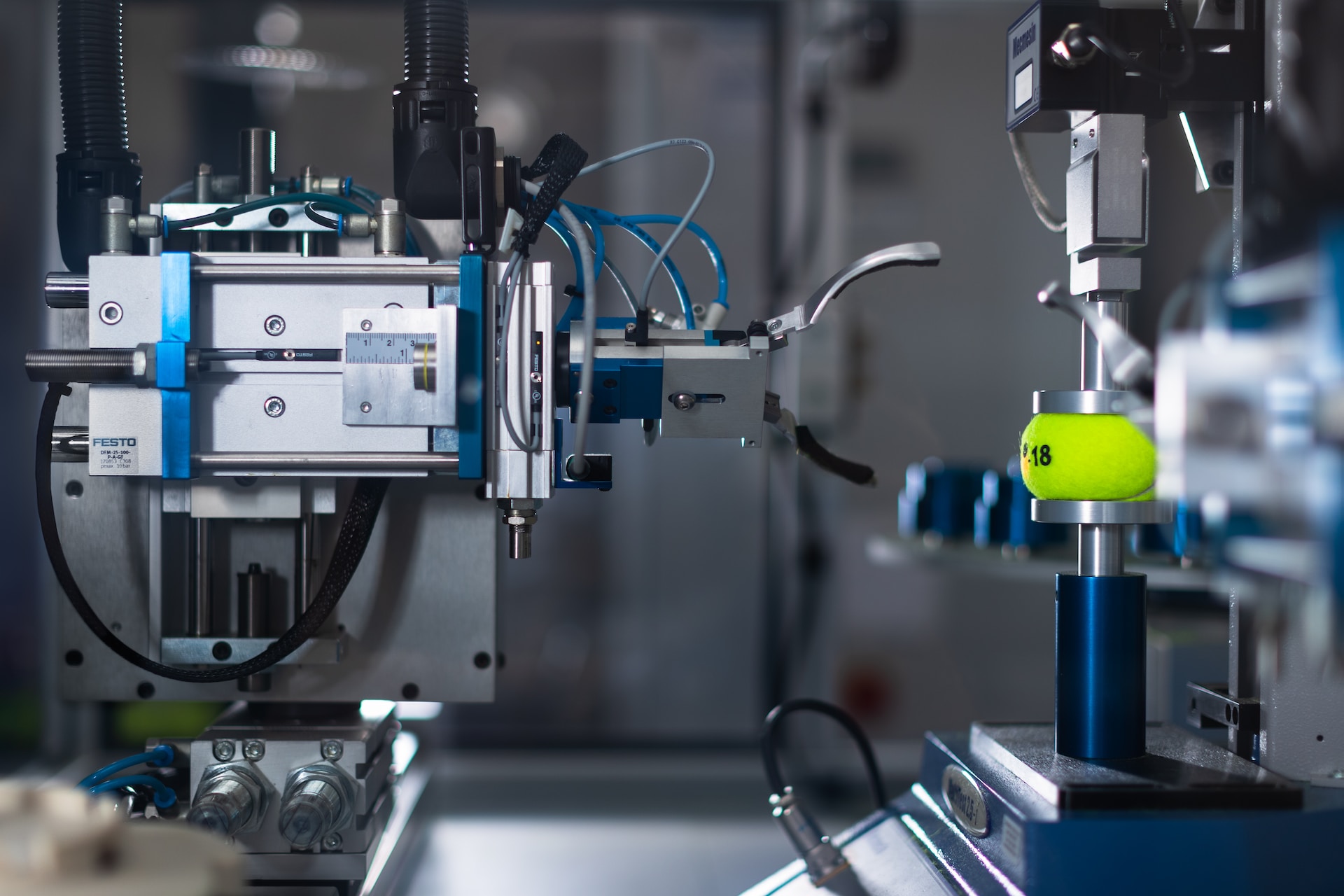
How Could Having a Cobot Assembly Line Help Manufacturers?
January 27, 2022 - Emily Newton
Revolutionized is reader-supported. When you buy through links on our site, we may earn an affiliate commision. Learn more here.
It’s increasingly common for manufacturers to invest in cobots to increase output and achieve other goals. Since these machines excel at repetitive tasks, it often makes sense to look for potential cobot assembly line tasks. Here are some eye-opening examples of what’s possible.
Meeting the Electric Car Demand
More people are seriously considering giving up their visits to gas pumps by switching to electric vehicles. Cobots can support that trend by providing the high productivity and reliability that manufacturers need to meet customer expectations.
In one case, decision-makers bought 11 cobots to assist with making and quality-checking the Fiat 500 electric car. Factory leaders concluded that the machines could help them achieve the necessary consistency. They also accounted for the moderately high average age of the factory workers. The hope was that creating a cobot assembly line could bring ergonomic improvements for the employees.
The cobots help with tasks such as applying waterproof liners to car doors, mounting hoods and mudguards. They also tighten hinges on the rear side-doors and verify that the soft-top frames have the correct dimensions.
Giuseppe Guidone, an ergonomics specialist overseeing the project, spoke of some of the associated benefits of having the cobots help with the waterproof liner application. He said, “The application of the liner required the operator to apply constant pressure using a dynamometric roller, a task that over the long term could damage the arm joints and cause musculoskeletal disease. So the cobot has brought two benefits: high operating precision and quality, along with improved ergonomics and well-being for our operators.”
When the cobots tighten door hinges, they eliminate a previously awkward situation where people could not see the correct hinge position inside the cars while doing the task. Overall, the results of an initial cobot trial showed that the machines enabled shorter cycle times, improved accuracy and better worker ergonomics.
Planning 24/7 Food Production With a Cobot Assembly Line
Some products cause more disruptions if factory output levels decline. Foods are good examples. People typically get upset when they try to buy items that were once readily available and only find empty shelves. Fortunately, building a cobot assembly line can help food manufacturers keep their productivity high during times of high marketplace demand.
Atria Scandinavia makes various packaged foods, ranging from artichoke hearts to shrimp. Choosing to automate with cobots allowed the factory to operate with more flexibility. Before installing the machines, it took six hours to convert the assembly line over to another product. That was a significant issue due to how many different products come from the facilities.
Johnny Jansson, Altria’s technical manager, oversaw the cobot deployment at the plant. “It is a significant advantage that our employees can work right next to the robots and that they easily can adjust the robots when packing different types of products,” he noted.
Jansson continued, “It simplifies the deployment of robots that we can build solutions for our production in-house. We can go back and forth between the workshop and the production line, refining applications as we build them. For example, we developed a small wheel to fold the edges of the cardboard boxes that the food products are packaged in. This solution probably wouldn’t have been conceived if we had been sitting in front of a computer planning the robot application.”
The company is a leading provider of vegetarian and gourmet products for convenience stores in Northern Europe. Many of those clients rely on Altria for round-the-clock production. The company only has 30 employees, however. Using three cobots to help the workforce has led to changes that make Altria more competitive.
Harnessing New Technologies on a Cobot Assembly Line
Most industrial robots used before cobots arrived were far too heavy and large to work around humans. The machines usually stayed behind cages due to the significant risk of severe accidents. However, cobots were game-changers. They include specific features, such as force limiters and padded parts, that make the machines suitable for use around humans. Most cobots also have sensors that make them decrease speed after detecting a human or something else in their path.
Even with all these safety enhancements available now, researchers are always looking for further improvements. A project at KTH Royal Institute of Technology involved creating a context-aware collaborative robot system. It goes beyond merely noticing there’s a human nearby. The invention can detect the person’s pose and even predict their next likely stance.
Hongyi Liu, who worked on the project, explained, “This is safety not just from the technical point of view in avoiding collisions, but being able to recognize the context of the assembly line. This gives an additional layer of safety.”
In one laboratory test, the robot had its path blocked unexpectedly by a person’s hand. However, the machine responded to that change by adjusting its movements rather than stopping. It gauged the hand’s future trajectory and navigated around it. The people who made the system hope it’ll lead to better efficiency because the machine won’t need to stop as frequently to stay safe around humans.
Current cobot assembly line options aren’t quite as innovative as this example. But, the fact that a team developed it and ran successful tests in their lab is undoubtedly hopeful. Manufacturers who are interested in augmenting their assembly lines with robots should remember that the models available now are safe options. However, the products reaching the market later might behave slightly differently while maintaining a low-risk environment.
Trying Robots Without the Financial Risks
Another compelling reason to make a cobot assembly line is to give people more opportunities to spend time on rewarding work. Cobots are fantastic at repetitive work, but those same tasks often become boring for people. That’s why it often makes sense to let humans handle work that cobots can’t. For example, people might do tasks requiring displaying creativity or making judgment calls.
At a Northeastern Ohio chemical plant, many employees do monotonous and physically taxing work. Some of them take containers off assembly lines. Some of the receptacles are 40-pound jugs, so that’s a good example of how the role could quickly become tiring. However, leaders decided to implement cobots at the factory. They think that choice will be vital for letting people transition to more enjoyable work.
Before finalizing this approach, the company was in a situation that probably sounds familiar to many in the manufacturing sector. It had good revenue, loyal customers and a 250-person workforce. Despite those benefits, the organization experienced tighter margins and more difficulty staffing open positions. The desire to stay competitive when faced with those obstacles was one of the driving forces behind bringing cobots into the facility.
The factory utilized a cobot rental model that allowed them to try the equipment without many of the expenses associated with buying it. The specifics vary by vendor, but manufacturers usually pay on a per-usage basis. Many vendors also offer options that let them transition from renting to purchasing if things go well. Alternatively, it’s typically easier and faster to scale up the number of cobots used if a company’s demands increase.
Proving the Power of Teamwork
It’s well known that teamwork can improve how things get accomplished. However, when most people think of it, their minds conjure images of humans striving towards shared goals. That’s certainly a valid example. However, as more manufacturers plan cobot assembly line layouts, they often discover the fruitful outcomes of human-machine teamwork.
CSVW is a Chinese automotive manufacturer that uses cobots for screw-tightening needs on an engine assembly line. One of the most convenient things about the chosen products is that they accommodate various attachments. In this case, the cobot uses one accessory to tighten three screws. It then switches it out for a different tool that tackles two other fasteners.
Another advantage is that a worker can stand near enough to the cobot during its operation that they can simultaneously do other tasks on the engine, such as lubricating areas or putting other parts together. Training the cobot is easy, too. Humans pull the robotic arm through the desired motions to teach it before use.
Many people fear that technology will take over their jobs. But, in the case of cobots, it allows humans to work beside the machines. While doing that, they accomplish more than they otherwise could.
Will You Make a Cobot Assembly Line?
These exciting examples show there’s a bright future for people who investigate how a cobot assembly line might help their factories. Interested parties are most likely to have positive outcomes if they envision clear and thoughtful use cases, then track metrics to gauge whether the machines cause the expected results.
Revolutionized is reader-supported. When you buy through links on our site, we may earn an affiliate commision. Learn more here.
Author
Emily Newton
Emily Newton is a technology and industrial journalist and the Editor in Chief of Revolutionized. She manages the sites publishing schedule, SEO optimization and content strategy. Emily enjoys writing and researching articles about how technology is changing every industry. When she isn't working, Emily enjoys playing video games or curling up with a good book.




